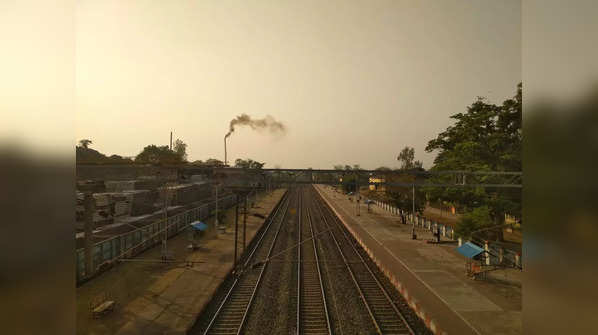The last train station of India where no train ever stops

The last railway station of India
Singhabad railway station, nestled on the India-Bangladesh border, is a unique entity within India’s extensive railway system. Situated in the Habibpur region of Bengal’s Malda district, Singhabad is distinguished by its lack of train stoppages. Despite its rich historical connections, the station now stands silent, its tracks devoid of the once-frequent passenger trains. The absence of train halts at Singhabad is not just a matter of operational changes but also a reflection of the evolving dynamics of transportation and geopolitics in the region.
Image: Canva

Historical significance
Established during the British era, Singhabad has been a witness to the passage of iconic figures such as Subhash Chandra Bose and Mahatma Gandhi. It served as a crucial connection between Kolkata and Dhaka, facilitating travel and commerce in pre-independence times. The station's importance grew after the partition of India in 1947, which altered the rail connectivity in the region. Singhabad emerged as a vital point for maintaining cross-border rail links.
Image: Canva

The station’s architecture
The architecture of Singhabad station is a window into the past, with its colonial-era structures and equipment still standing, albeit mostly unused. The signal systems, the ticket counters, and other facilities, though now relics of a different time, evoke memories of an era when the station was a hub of activity and movement. This architectural heritage is a rare preservation of the colonial imprint on India’s railway infrastructure.
Image: Canva

Singhabad in modern times
After India’s independence, Singhabad’s role underwent a transformation. The creation of Bangladesh in 1971 and subsequent geopolitical shifts led to a 1978 agreement that permitted the operation of goods trains from Singhabad. An amendment in 2011 expanded this role, allowing transit for trains to and from Nepal. Thus, Singhabad became a crucial transit point for goods, highlighting its strategic importance in the region’s trade and commerce.
Image: Canva

The deserted platform
Today, Singhabad presents a stark contrast to its past. The platforms are deserted, and the ticket counters remain closed. A handful of staff members are the only signs of operation, maintaining the station that once echoed with the sounds of the Darjeeling Mail.
Image: Canva

The last station
Singhabad is often referred to as India’s last station due to its geographical location and the fact that it serves neither as an origin nor a destination for passenger trains. It stands as a silent sentinel at the nation’s edge, a station where time seems to have paused.
Image: Canva

Singhabad’s future
While currently not in use for passenger services, Singhabad’s strategic location could potentially make it a focal point for future rail developments, especially concerning international trade and relations with neighboring countries.
Image: Canva

Other unique stations in India
One of the most unique train stations in India is Rashidpura Khori in Rajasthan. It holds the remarkable distinction of being the only railway station in the country that is run and maintained entirely by the villagers themselves, without any involvement from railway employees or officials. This station truly embodies the spirit of a community-led initiative, where the local villagers have taken it upon themselves to manage the station’s operations, making it a one-of-a-kind example of self-sufficiency and local governance.
Image: Canva

Lesser known facts about the Indian railways
The Indian Railways, often hailed as the lifeline of the nation, is not just one of the world's largest railway networks but also a treasure trove of fascinating facts. For instance, did you know that the Indian Railways is the largest network operated by a single government and ranks as the third largest globally with a total length of 127,760 kilometers? Or that it once boasted the longest railway platform in the world at Kharagpur, which has now been surpassed by Gorakhpur station with a span of 4,430 feet? The railways' reach is extensive, connecting 7,172 stations and ferrying an astonishing 8.421 billion passengers annually. Moreover, the Indian Railways is not just about transportation; it's a cultural heritage with two of its elements—the Chhatrapati Shivaji Terminus and the Indian Mountain Railways—included in the UNESCO World Heritage site list. These lesser-known facets highlight the Indian Railways' blend of immense scale, historical significance, and continuous evolution, making it a subject of endless intrigue and pride.
Image: Canva

A brief history of the Indian railways
The Indian Railways, a monumental chapter in the nation’s development, began its journey in 1837 with the Red Hill Railway transporting granite in Madras. The first passenger train steamed from Bombay to Thane on 16th April 1853, marking the dawn of railway transport in India. Post-independence, the Indian Railways was nationalized in 1951, consolidating various regional systems into one unified entity. This network, initially comprising 42 separate railway companies, was reorganized into six zones, which has since expanded to 18 zones. Today, Indian Railways is the world’s fourth-largest by size, boasting a route length of over 68,000 km, and it continues to be a vital backbone for the country’s transport infrastructure, carrying millions of passengers and freight daily
Image: Canva









